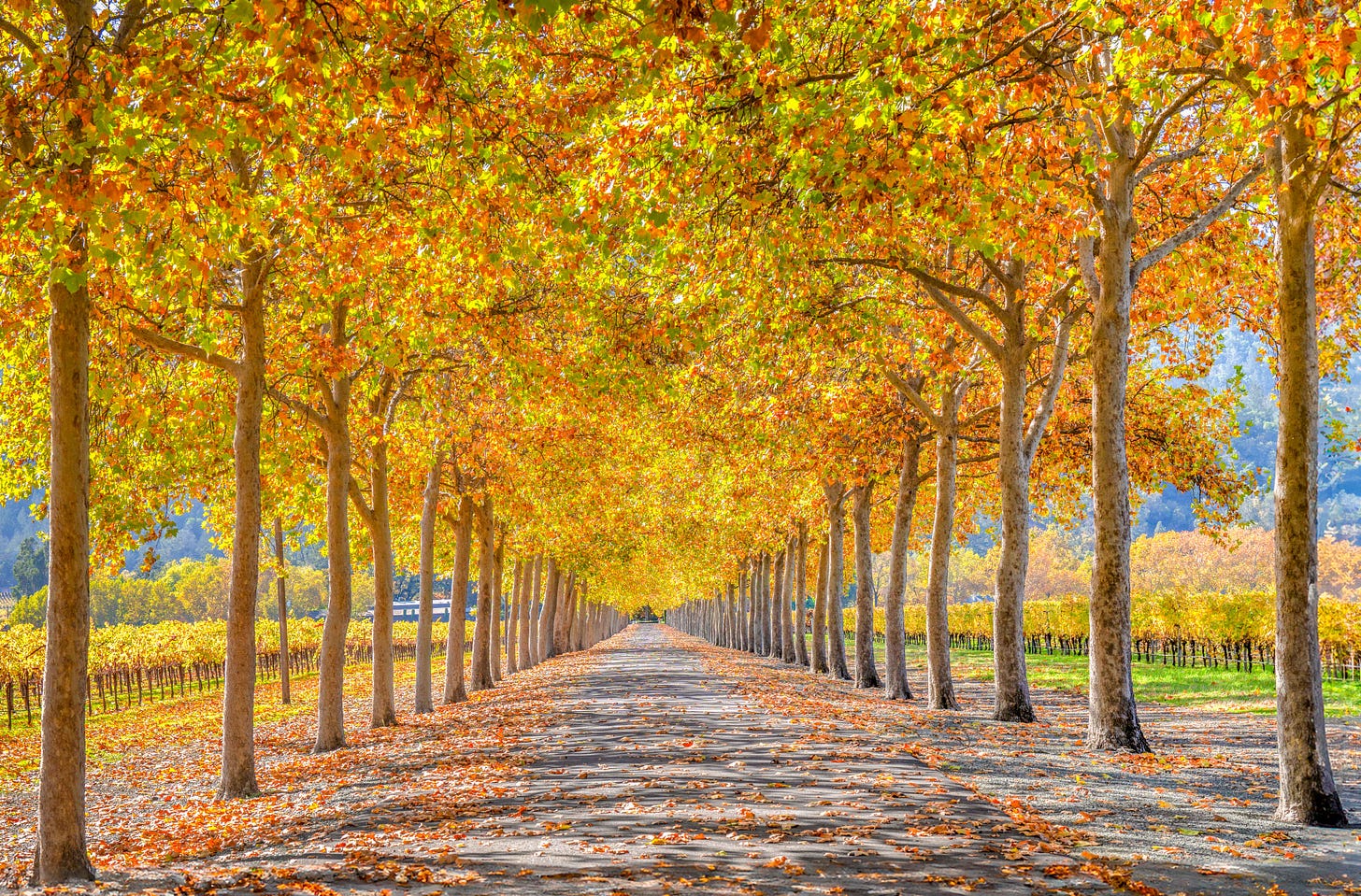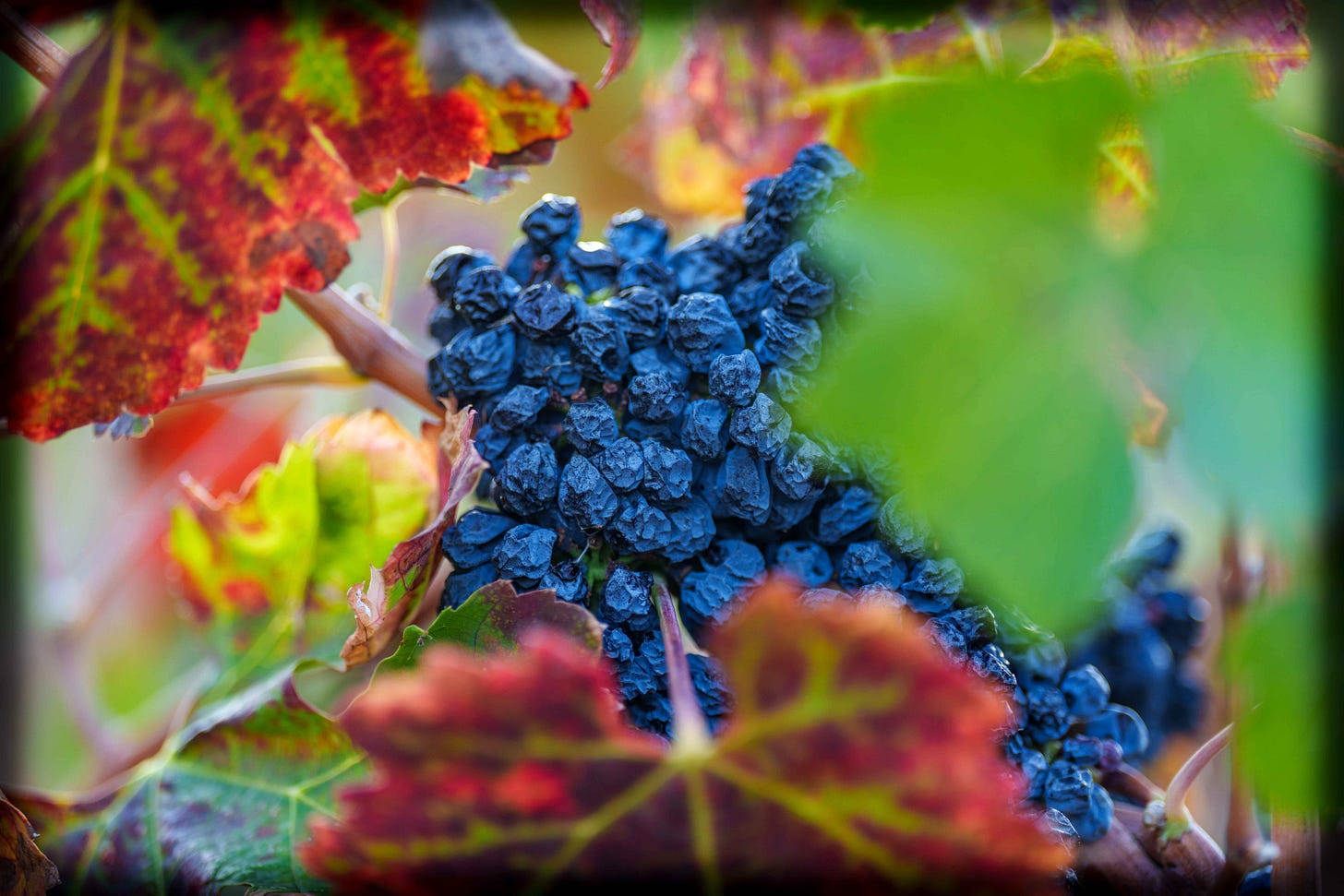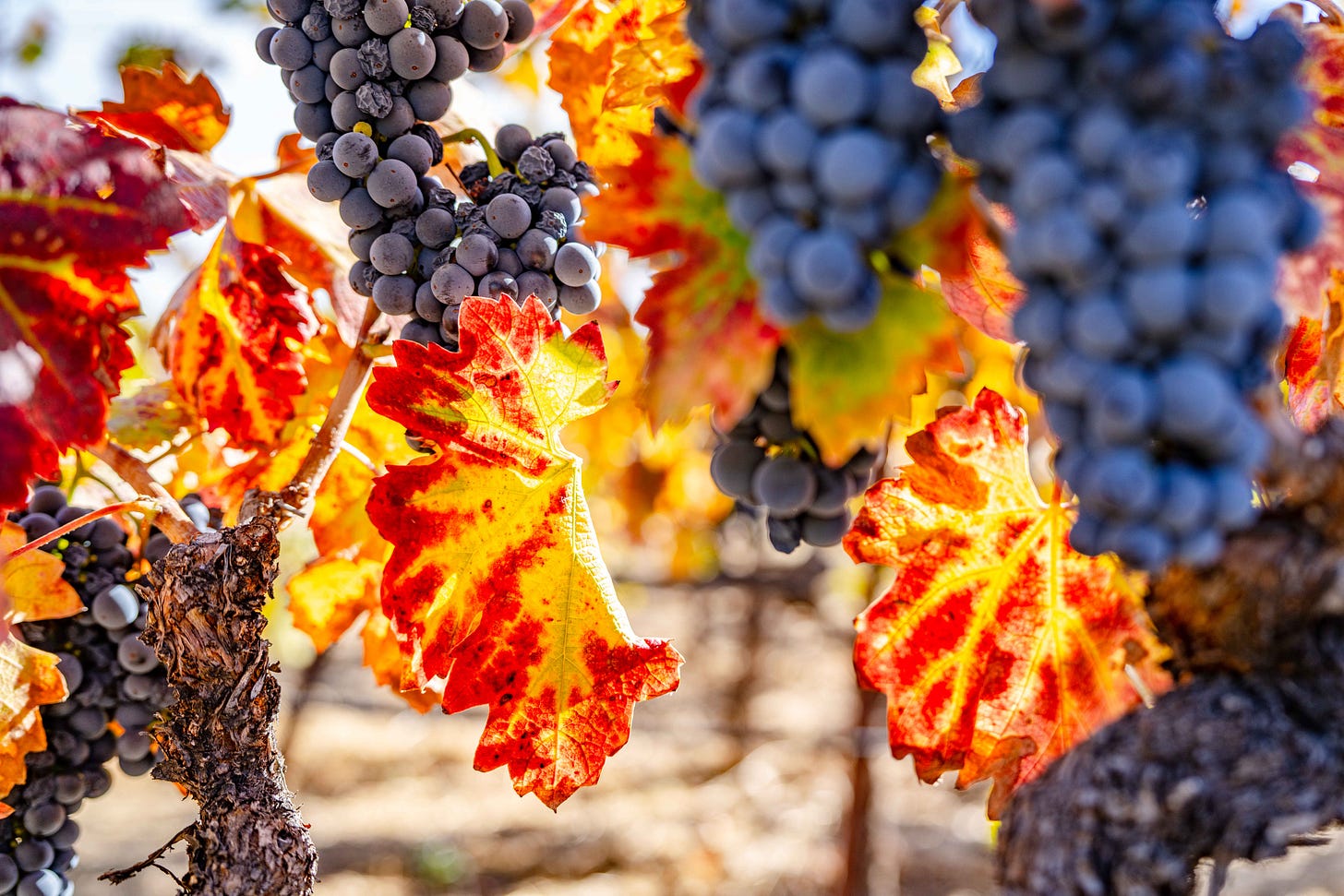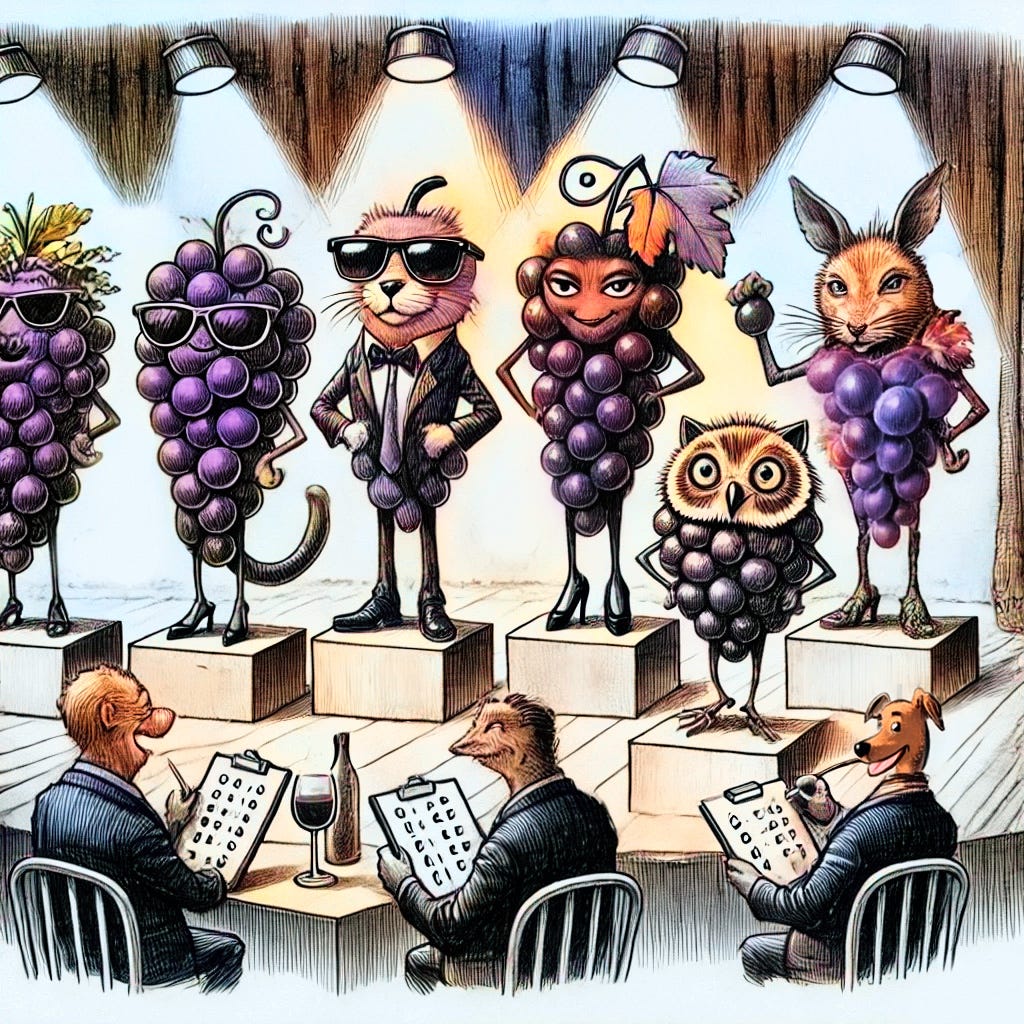NAPA VALLEY, Calif. — Each varietal wine in this world has what might be termed a manifest destiny – a target, an objective; it has a general genetic propensity for developing a kind of soul-ness, a personality that purists accept as a series of expected characteristics. Some grapes that are turned into wine display this character early in their short lives; others require years or decades.
Each variety depends on its soil, climate, aspect, aging and several other tactics for it to display its personality, which can change from year to year. It is this diversity that makes wine so eternally fascinating – the unique forms a single grape variety can assume and still be relatively identifiable. It is also a kind of window into identifying a wine’s region of origin.
A good example of sauvignon blanc displays various forms of herbs, traces of cilantro, a bit of citrus fruit like citron and a general “sauvignon blanc-ness” that wine lovers can readily identify as to grape type. And when the aroma has traces of iodine, cat pee and/or gooseberry, they may correctly identify that it came from New Zealand.
A large book could be written about this. The brilliant English journalist/author Jancis Robinson has already done a remarkable job on this topic in several of her acclaimed works. With two co-authors, her massive 2012 opus simply titled “Wine Grapes” (Ecco Publishing) is about as close as anyone has ever come. So did Dr. Ann Noble at UC Davis when she created the “aroma wheel” to help identify the various aromas in wines.
One of wine’s greatest attributes is its endless variety. With many people seeking alternatives to the commonplace, these less-than-popular grapes … make wines with good balance. Their growth may contribute to the resurgence in sales that will bolster the wine industry in a time of austerity.
One major complication exists in this thesis: extremely high scores given to some grapes’ wines. Some people bestow points on various varietal wines. This is usually done not because the wines display each grape’s core constituents but because the wines are concentrated and plush. Purist wine-lovers (i.e., riesling-lovers), who are the best ones to identify the core elements of the various varieties, care less about concentration; mostly they’re looking for character. This is key to understanding the core of each grape.
Delving into this topic in this small a space may seem presumptuous (it is!), but the conclusions that follow, though they are only opinions, are at least topics for further discussion. I am happy to discuss/debate anyone about these notions, as personal as they are.
Rather than begin by discussing obscure red wine varieties such as saperavi, noiret or areni noir, let’s look at what I consider to be the world’s four great red wine grapes, which I call “ultra-noble” varieties. Then there are other grape varieties that might be considered “noble,” and then I name some of the grapes that I believe are on the junior varsity. Some of these may actually make truly great wines.
Challenge your vocabulary with this week’s mystery word. Submit your answer in the poll, and check the bottom of the page for the correct answer.
I believe that the four greatest ultra-noble grape varieties are cabernet (along with its cousin varieties), nebbiolo, pinot noir and syrah (or shiraz in Australia). All four are about as noble as you can imagine. They produce literally dozens of classic examples of heralded wines, and all four are linked to European wine regions.
The cabernet family of grapes defines red Bordeaux, pinot noir makes some of the world’s greatest red wines in Burgundy, syrah is at the heart of the best reds of France’s Rhône Valley, and nebbiolo produces some of the world’s longest-lived and most-acclaimed wines in northern Italy’s Piemonte.
Claiming noble status are five more superb grapes: grenache, sangiovese, tempranillo, gamay noir a jus blanc and barbera. Here we get into a little controversy since some people would not place grenache as high as the category of noble, yet others might be irate that it isn’t in the top group, ultra noble. Indeed, most of the purveyors of all five would assert they belong higher.
There probably is little controversy about the top four. But as I began doing this analysis, it dawned on me that there were some crucial and distinct elements about each of the varieties and how they best display their unique characteristics. But here is how complex it is: The highest-scoring wines in each of the four categories rarely display what I consider to be essential their core individualities.
For any grape variety to show its uniqueness, ideally it should be harvested a bit earlier than the highest-scoring wines usually are. The reason has to do with concentration and high alcohol levels, which most critics adore. Since the high-scoring wines almost always are higher in alcohol and rich, concentrated and soft, their very style mitigates against their displaying authenticity of varietal elements.
Noble Grapes:
Pinot noir: The combination of richness and delicacy of great pinot noir is better displayed with this variety than with any of the other three. The aromas of faded roses, strawberry and other berries; a faint tomato character; and more graceful tannins are just a few of the elements that make this variety so seductive and alluring. Pinot’s lower tannins create silkiness.
Nebbiolo: This is the one ultra-noble variety that is almost exclusively the domain of northern Italy, notably Piemonte. Very few areas other than Italy make a classic nebbiolo. Decades ago it was famously described as having aromas of tar and roses. It also displays a remarkable earthy quality that is not “dirt”-related but is so identifiable to Barolo-lovers that occasionally it is described as slightly dried blackberries with hints of leather and licorice. Another key to the wine’s personality is that when it is made to be classic, its astringency is so rigid that newcomers think it’s sort of like running a tongue over coarse sandpaper. Ah, but give Barolo time.
Syrah: Hard tannins in these grapes often can make for astringent reds and are often off-putting. But the appealing “rustic-fruit,” blueberry jam, black pepper and even a trace of violets can be so fascinating that aging syrah and shiraz wines is almost always beneficial. It’s a grape that really does create a love-hate reaction from some people when it is young, and anyone averse to its astringency usually opts for pinot noir instead.
Cabernet: And here is where complexity, not fruit, becomes one of the wine’s greatest attributes, especially after the wine has been aged to the point where you can actually see the core elements. Unfortunately, California winemakers and owners have usually chosen to go for fruit (of a sort) and for high scores rather than personality. This is why describing this grape and its cousins (often as blenders) is so inordinately difficult.
As previously noted here, herbal components are an absolute essential for this wine to display why it is so highly appreciated in Bordeaux and elsewhere, notably and usually after some bottle age. But when it is made with a later-harvesting regimen, it can have such plum aromas and high alcohol (and usually oak flavors) that when it is released to the public, frequently far sooner than it should be, cabernet becomes nothing more than a simplistic, slightly overripe, clumsy example of how not to make cabernet.
Those who decry the current cab mode often refer to it as dry Port. Not all wines should be so demeaned; some do have the capacity to develop into cabernetlike reds. But when alcohols reach more than 15%, there is a strong likelihood that the wine no longer carries the stamp of the variety.
When the herbal components have been consciously and methodically rooted out of the mix, what’s left has little or nothing to do with cabernet – certainly not what Mother Nature intended when the grape was planted. The owner or winemaker probably had other ideas. I often wonder if some of the new owners in the Napa Valley have even given a single thought to cabernet’s core characteristics – or if they were ever exposed to them.
Most red wines with 13% alcohol (or less) have historically proven to be the best aging wines. Most red wines with 15% alcohol or more are unlikely to age. Also, lower-alcohol reds tend to be engaging when consumed young because they work nicely with food. Their charm is based on an interaction between the brightness of fruit, the better acidity, and their dried or fresh herbs, combining the personality of the great fruit that cabernet and its cousin varieties almost all have in surplus when picked earlier.
Our original four ultra-noble grapes certainly all display greatness when they are aged properly. However, one of the critical elements in all four is that the wines must be properly structured with good acid, a lower pH and other constituents. Since this is also true of any other grape that even hopes to make a statement with time in the bottle, let’s look at the next group.
Unsung Companions:
Grenache: I was tempted to put this in the top group. It is my favorite red wine grape of all. When grown in moderate climates, it can produce wines of supreme structure. It can be slightly tannic, but handled with care, its fruit is exotic – wild cherry, pomegranate, and occasional black or white pepper in cooler climates. It often has a brilliant aroma and almost cranberry fruit. I have had fascinating examples that are 20 years old. Perhaps the best of its type is the Rhône’s Château Rayas, a surreal experience.
Tempranillo: The grape at the heart of Rioja, it has delightful dark-cherry fruit with traces of fresh plum and orange peel. It is not known for making excessively long-aging wines and can be slightly lower in overall acidity. As a result, Spain’s younger crianza Rioja wines can be charming from release to seven years. On rare occasions its wines can be aged for a dozen years. Additional time in barrels can make some Riojas a bit more substantial, which calls for additional bottle aging.
Gamay noir a jus blanc (or just gamay): It mystifies me why Beaujolais isn’t better appreciated. The grape’s core aromas and flavors are exciting, if possibly a little evanescent. Because of some bad publicity, this fascinating, complex variety has fewer fans than it should. Blessed with a multitude of bright cherry-berry fruit elements, it makes a frivolous wine called “nouveau,” which may be why the French district’s reputation has been sullied. But the top cru Beaujolais can be a perfect all-purpose red, occasionally displaying distinctive black pepper alongside blueberry fruit. And the best can age for 10 to 15 years.
Barbera: Muted plum-y, berry fruit with a slight trace of rustic-ness often are elements in this grape from northern Italy. Unlike other Italian grapes, it has much less tannin but much more acidity, so it is often seen in Italian cafés as an alternative to Chianti. It can be hearty, but because of its higher acid level, it usually requires food.
Sangiovese: It’s the most widely planted grape in Italy. A lot has been written about it recently because it is the mandatory grape found in all Chianti and is at the heart of brunello. For the last few decades sangiovese has been the subject of new laws regarding its production. Acidity is the key to the grape, so it is tart and great with red-sauced pastas. And it can also be relatively tannic, which calls for it to be aged. Most “normale” Chiantis do not age particularly long, but riservas can go 30 years. I opened a 1985 Prunaio Chianti from Vitticio last week and it was astounding.
The next tier of red wine grapes, a group that can be called the junior varsity, starts with a grape variety that I personally adore — petite sirah. The only reason it is not listed in the above group is that the greatness of this variety can be seen today only in California and perhaps in two other states.
It is highly regarded by growers and winemakers because it has amazing staying power. Not only has it been used to bolster the fruit components and body of red-wine blends that otherwise would be thin and lifeless, but petite sirah seems to thrive as a stand-alone red wine because in spite of some substantial tannins, the fruit is so strong that its wines hold up to the hardiest of foods. Moreover, it can age beautifully for decades.
However, in France, the same variety, called durif, is little more than an obscure blending grape with no particular acclaim. It also makes an attractive red in Australia’s Rutherglen.
Other junior varsity grapes include zinfandel (an extremely popular red wine in California until fairly recently, when high alcohol levels caused sales to slump), primitivo (a zinfandel-related grape that lacks most of zinfandel’s fruit and natural spice), Crljenak kaštelanski (probably a direct ancestor of zinfandel, now grown in California by only two or three wineries; more about this in an upcoming column), tannat (a coarse, astringent wine that’s hard to make succulent), cinsault (underrated Rhône variety, often an essential component in southern Rhône blends and in dry rosés because of its strong fruit), carignane (considered the workhorse grape in California because it adds a solid level of fruit for blends and can stand on its own) and pinot meunier (widely planted in Champagne; in California, it can make a delightful lightweight version of pinot noir).
Other grapes: Nero d’Avola (the dominant red wine of Sicily, relatively dark and concentrated with plums and pepper), Blaufrankisch (an Austrian/Eastern European variety that does extremely well in cooler climates, it has excellent blueberry fruit and is a delightful food accompaniment; also called lemberger); Charbono (called bonarda in Argentina, it once was prolific in Napa because of rich fruit; excellent to age – Inglenook once made great versions) and mourvèdre (also called mataro and monastrell, ancient variety from France and Spain; wines can be alcoholic and tannic).
More obscure grapes in California: Touriga nacional (Portugal’s top red grape); tinta cao, bastardo, tinta roriz (all of Portugal); norton (a native American variety, best in Virginia and Missouri); zeigelt (a high-acid Austrian grape); pinotage (popular in South Africa, it’s a cross of pinot noir and cinsault); St. Laurent (dark-skinned, blueberry-scented, low-tannin wines); counoise (dark-skinned southern Rhône blending grape); carmenere (a Bordeaux blending grape that does well in Chile); and alicante bouschet (a teinturier/red-juiced grape that is usually unconscionably tannic).
Not all of these grapes make wines that are identifiable. Some produce wines that are somewhat amorphous. A few exist primarily to be used as blending grapes because they enhance the overall aromatic, flavor and/or structural profiles in wines that are intended to be much better together than any of their components taken individually.
The above list is simply those grapes that are being produced in California’s north and Central Coast areas. In many cases these grapes are grown on ancient vines, which are expensive to remove and replace with more respected varieties.
With sales of higher-alcohol wines declining, it has become clear in the last few years that the diversity of the junior varsity grapes makes them a charming alternative resource. One of wine’s greatest attributes is its endless variety. With many people seeking alternatives to the commonplace, these less-than-popular grapes (which often are harvested slightly earlier than normal grapes) make wines with good balance. Their growth may contribute to the resurgence in sales that will bolster the wine industry in a time of austerity.
This Week's Word Challenge Reveal:
The correct answer is A: "Grape juice before fermentation." In winemaking, "must" refers to the freshly crushed grape juice, along with skins, seeds and stems, that begins the fermentation process. The term "must" comes from the Latin term vinum mustum, which means "young wine.” We hope you enjoyed this week’s challenge and look forward to next week’s word.
If today’s story captured your interest, explore these related articles:
Dan Berger’s Wine Chronicles: Proof That Napa’s Older Cabs Can Age
Dan Berger’s Wine Chronicles: Napa and Sonoma as True Vinous Siblings
Dan Berger’s Wine Chronicles: The Nostalgia and Nonsense of Barrel Tastings
Dan Berger’s Wine Chronicles: The Evolution and Art of Winemaking
Dan Berger’s Wine Chronicles: How Wine Is Packaged Can Affect Its Quality
Dan Berger has been writing about wine since 1975.
The views, opinions and data presented in this article are those of the author and do not necessarily reflect the official policy, position or perspective of Napa Valley Features or its editorial team. Any content provided by our authors is their own and is not intended to malign any group, organization, company or individual.










Thank you for distinguishing the different varietals. I learned a lot.